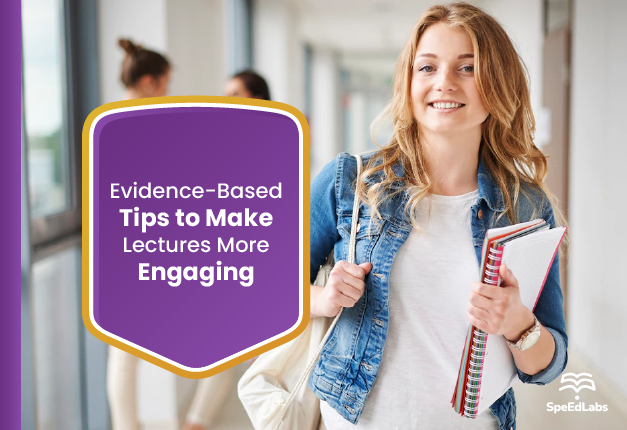The vast majority of school and university teaching continues to take place in traditional lecture halls with large numbers of students, posing challenges to how ‘active’ students can be in their learning.
Traditional lectures are primarily didactic and taught by a teacher. Lectures can be effective at presenting information, but they are ineffective at changing students’ attitudes or stimulating higher-order thinking.
When done correctly, lectures are an invaluable tool for increasing student knowledge. Based on the research, here are some suggestions for making your lectures more engaging and the material more memorable.
-
Examine and Enhance your Background Knowledge.
It is difficult for students to engage with your lecture if they cannot understand it, to begin with. In a 2019 study, researchers discovered that if students did not meet a “knowledge threshold,” their comprehension of a topic was severely hampered—being unfamiliar with 59 per cent of the topic’s terms resulted in “compromised” comprehension.
Before the lecture, a simple review of key vocabulary terms and concepts is a useful scaffold, but there are more structured ways to supplement background knowledge. You can also show an introductory video to help generate interest in a topic, followed by a brief discussion before diving into your lecture.
-
Breaks are more important than we realise.
The longer you speak, the more difficult it will be for students to pay attention. Researchers concluded in a 2016 study that elementary students were unable to focus for more than 10 minutes. Although middle and high school students can hold their attention for a little longer, a landmark 2011 study reveals the same linear relationship between time and retention: the material presented earlier in a lecture is retained more reliably than the material presented later.
Brief brain breaks, such as a short bout of exercise, a mindfulness break, or a fun off-topic activity to stimulate conversation, can reset students’ attention and give them space to process new information.
Such breaks are more important to learning than we realise.
-
Check for Progres.
Take a few minutes now and then to check for student comprehension. These probing exercises help to uncover gaps in student understanding, change the dynamics of your lecture briefly, and provide an opportunity to review the materials and ensure that the information sticks.
You can instruct students to use hand gestures such as an up, down, or sideways thumb to indicate their comprehension of a concept.
Short, low-stakes quizzes are also very effective.
-
Slow It Down.
It is easy to succumb to the curse of knowledge, writes Christopher Reddy, a high school teacher. Because you are an expert in the subject you are teaching, you may make assumptions about the clarity of your lessons. Put yourself in your students’ shoes and explicitly walk them through connections that may be obvious to you.
Every new concept necessitates students to grapple with new vocabulary, connecting information to previously learned material, and then developing a coherent view of the topic.
Students will follow your lecture at varying speeds—many will still be mulling over information as you introduce a brand-new concept—so avoid going too fast, and build in pauses to allow them to catch up, ask questions, finish their notes, and process the material.
-
Use Visual Aids and Graphic Organisers.
Lecturers can become overly reliant on words, which can reduce engagement and comprehension. Making your lecture more interesting by presenting information in different ways, such as verbally and visually, can help students see connections more clearly. Consider attempting to explain how an engine works in the absence of a visual aid: What takes a few minutes to explain verbally only takes a few seconds to explain with a diagram. In a 2015 study, students who listened to a physics lecture with visual aids outperformed their peers who listened to the lecture without visual aids by nearly 70% on a follow-up test.
In addition to visual representations of information, you can organise lecture information in a variety of ways to improve student comprehension.
-
Connect the work to students’ lives.
When students see their backgrounds and cultures reflected in the materials used in class, they are more receptive to lectures.
Researchers discovered in a 2019 study that Black students were more responsive to lectures when the materials included clear references to Black people, resulting in academic performance that was nearly a full letter grade higher than that of their Black peers who were exposed to materials that focused on White people.
Audit your prepared materials before lecturing to see if they reflect the diversity of your classroom. You can use a student interest survey to determine students’ interests, and then incorporate relevant materials into your lectures, such as articles, song lyrics, speeches, or short video clips.
-
Be yourself, and the rest will follow.
Be mindful of your tone and demeanour: projecting an authoritative demeanour can come across as aloof, causing children to tune you out. According to a 2017 study, students prefer teachers who have an authentic, conversational style, and passion for the material goes a long way. Students not only report richer, more meaningful learning in these settings, but they are also more willing to invest time and effort into a lesson, stepping outside of their comfort zone to engage with the material.
Also published on Medium.
